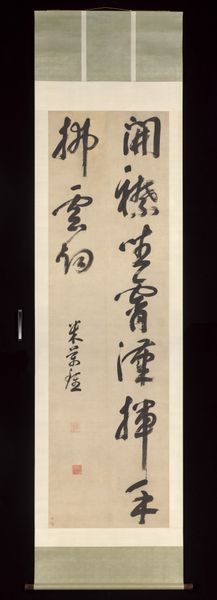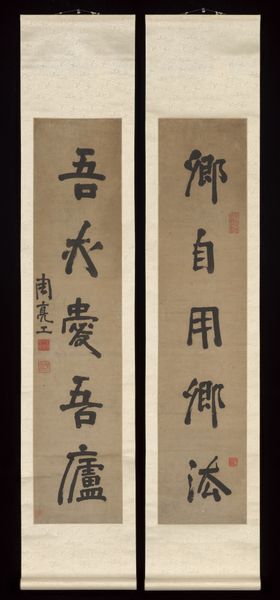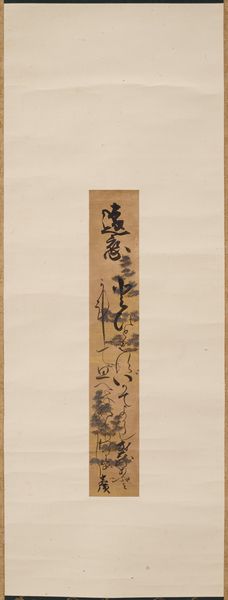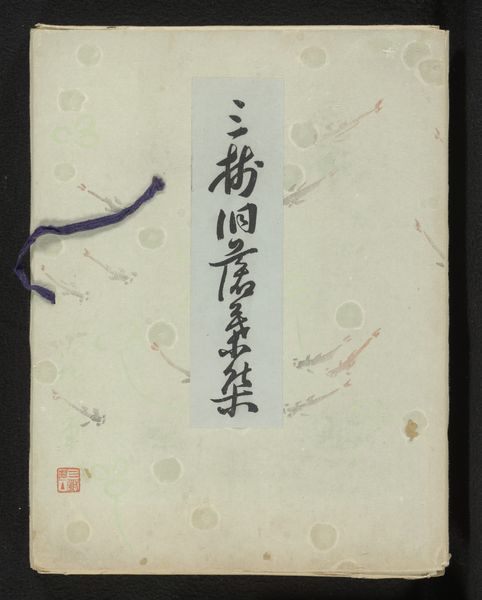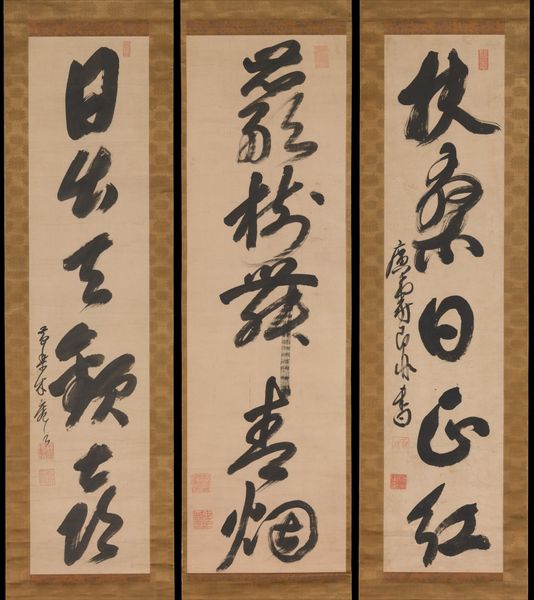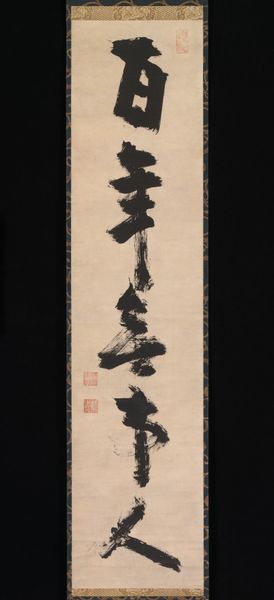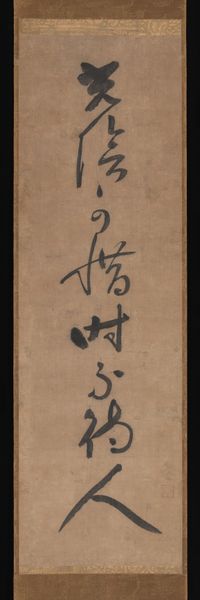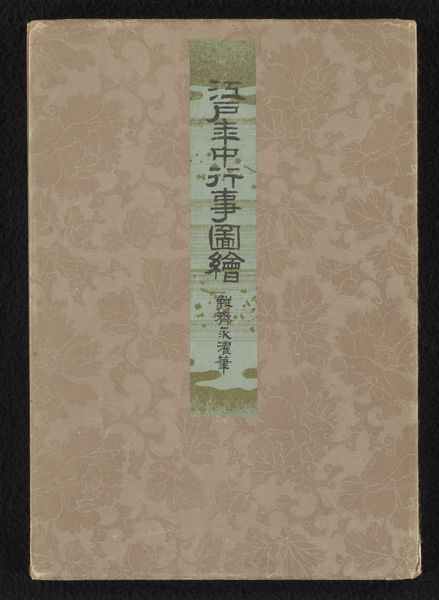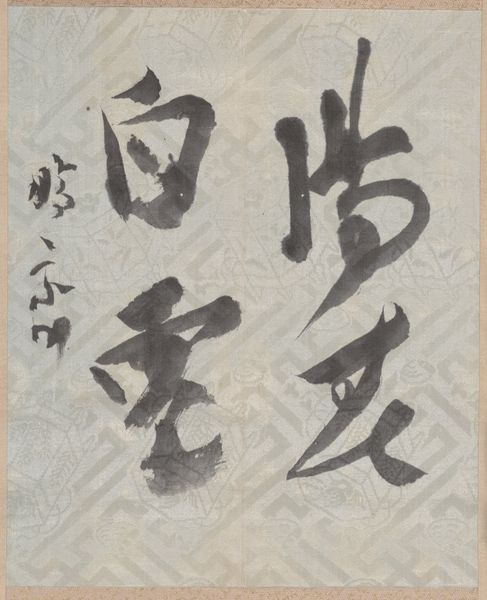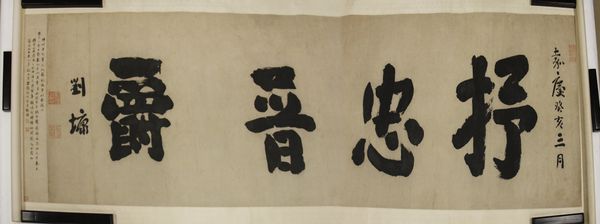
Couplet from the Chinese Poem “Grasses” by Bai Juyi 15th century
0:00
0:00
drawing, paper, ink
#
drawing
#
sculpture
#
asian-art
#
paper
#
ink
#
calligraphy
Dimensions: Image: 46 3/4 × 10 3/8 in. (118.8 × 26.4 cm) Overall with mounting: 74 11/16 × 10 15/16 in. (189.7 × 27.8 cm) Overall with knobs: 74 11/16 × 12 1/2 in. (189.7 × 31.8 cm)
Copyright: Public Domain
Editor: This scroll features ink on paper and presents a couplet from the Chinese poem "Grasses" by Bai Juyi. It's attributed to Bokusai and dates back to the 15th century. I’m really struck by the dynamism in the brushstrokes, they almost feel like they’re dancing on the paper. How do you interpret this work within its historical context? Curator: A fascinating question. I think one entry point would be to consider the role of calligraphy during the 15th century in Japan. At the time, Zen Buddhism significantly impacted the arts, including calligraphy. Zen principles prized spontaneity and direct expression. We see this mirrored in the calligraphic style, where the brushstrokes are meant to capture the artist's immediate state of mind. Do you see the social implication in this form of art expression? Editor: Yes, the social impact, as it’s communicating on many different levels. Not just words to be read but a mood to be conveyed by this unique style! Were these scrolls often displayed publicly, or were they more private pieces? Curator: They could function in both spheres. Scrolls were frequently displayed in homes and temples as objects of contemplation. Their reception, of course, hinged on one's level of literacy and familiarity with Zen principles, potentially creating an exclusive, cultured audience. Editor: That's insightful; I hadn't thought about the level of access depending on those specific qualifications. It changes how I view its presence within the culture at the time. Curator: Indeed. Considering these aspects can profoundly shape our appreciation for this calligraphic artwork, going beyond a purely aesthetic evaluation and toward a more historical context. I'm curious; how does understanding this potentially affect your emotional reaction to the work? Editor: Well, it deepens my respect. Knowing it was part of a much broader movement that reflects Zen aesthetics adds layers of complexity. It moves beyond mere decoration and embodies the beliefs and social contexts of the people creating this piece! Thanks so much! Curator: My pleasure! I appreciate how your initial, aesthetic reaction ultimately evolved to encapsulate something far richer and more meaningful.
Comments
No comments
Be the first to comment and join the conversation on the ultimate creative platform.
